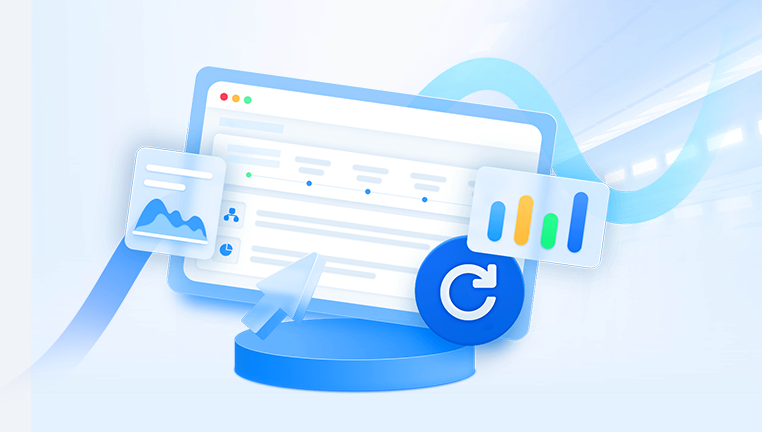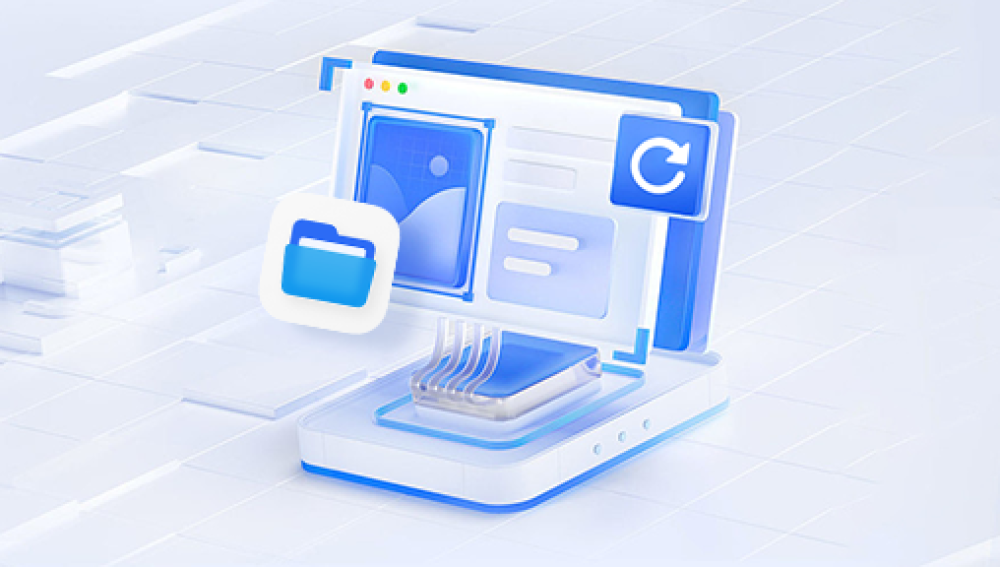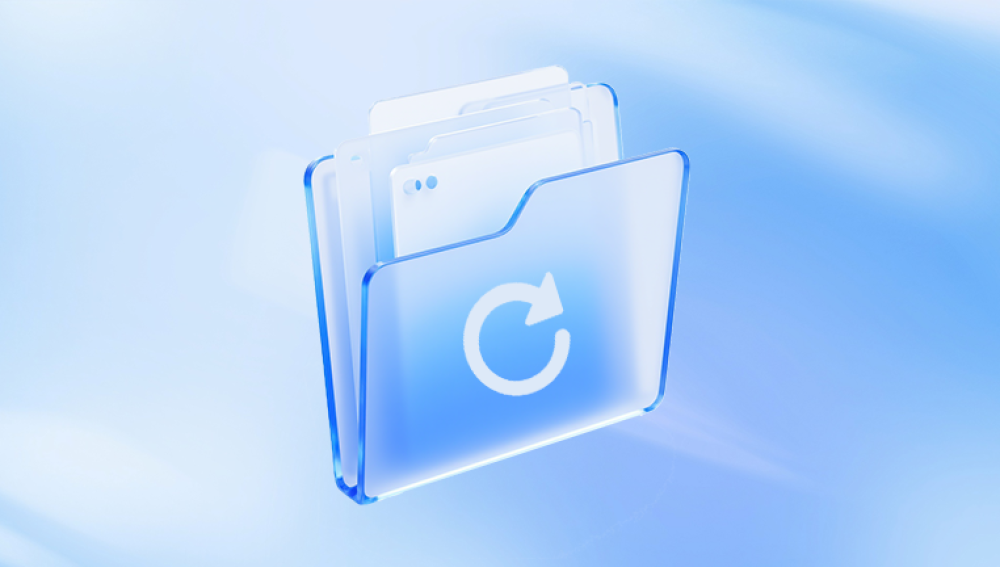When a file is deleted from your system, it typically isn’t immediately removed from the storage device. Instead, the space it occupied is marked as available for new data. Until that space is overwritten, recovery is often possible. File recovery software works by scanning your drive for these recoverable files.
Recommended Free Programs for File Recovery
Here’s a breakdown of some reputable, free file recovery programs:

1. Drecov Data Recovery
Drecov Data Recovery is a powerful tool designed to help users recover deleted files from various storage devices, including hard drives, SSDs, USB drives, and memory cards. Whether you've accidentally deleted important files, or they’ve been lost due to system crashes, Drecov Data Recovery can assist in retrieving them.
One of the key features of Drecov Data Recovery is its ease of use. With an intuitive interface, it guides users step by step through the recovery process. It supports various file formats, including documents, images, videos, and audio files, making it a versatile solution for different types of data loss. The program also offers deep scanning capabilities, which means it can detect and recover files that may not be easily visible during a quick scan.
Drecov Data Recovery is compatible with both Windows and macOS, which increases its utility across different operating systems. Furthermore, the software supports recovery from a wide range of storage media, including internal hard drives, external drives, USB flash drives, and SD cards.
For those worried about security, Drecov Data Recovery allows you to preview files before restoring them, ensuring you’re recovering exactly what you need. The software also offers free recovery for small amounts of data, though larger recoveries may require a paid version.
2. PhotoRec
Despite its name, PhotoRec can recover more than just photos. It works on Windows, macOS, and Linux, offering broad support for different file types and storage devices.
Pros:
Open-source and free for all users
Works with damaged or formatted disks
Cross-platform support
Limitations:
Command-line interface can be intimidating for beginners
Does not restore original filenames or folder structures
3. TestDisk
From the same developers as PhotoRec, TestDisk specializes in recovering lost partitions and making non-booting disks bootable again.
Pros:
Open-source and free
Recovers lost partitions
Powerful for disk structure repair
Limitations:
Command-line only
Requires understanding of partition tables
4. EaseUS Data Recovery Wizard Free
While EaseUS offers paid versions, the free edition allows recovery of up to 2 GB of data on Windows and macOS.
Pros:
Modern, intuitive interface
Supports many file systems and devices
Preview function before recovery
Limitations:
Recovery limit of 2 GB in the free version
Paid upgrade prompts
5. Disk Drill
Available for Windows and macOS, Disk Drill provides reliable recovery with a polished interface.
Pros:
Easy to use
Preview files before restoring
Supports many file types
Limitations:
Free version allows recovery of up to 500 MB on Windows
Mac version has more restrictions in the free edition
6. Wise Data Recovery
Wise Data Recovery offers a fast and lightweight file recovery solution for Windows users.
Pros:
Quick scan speeds
Portable version available (no installation required)
Filters results by file type and status
Limitations:
No support for macOS or Linux
Basic feature set
7. Windows File Recovery (Microsoft)
Microsoft provides its own command-line tool for Windows 10 and above. It can recover lost files from local drives and connected devices.
Pros:
Free and developed by Microsoft
Good integration with Windows
Supports various recovery modes
Limitations:
Command-line interface only
Learning curve for casual users
8. MiniTool Power Data Recovery Free Edition
Another Windows-compatible solution that allows users to recover up to 1 GB of data.
Pros:
Clean and easy-to-use interface
Supports damaged or lost partitions
Limitations:
Recovery cap on free version
Upsells for premium features
Choosing the Right Tool
The best choice depends on your technical skills and recovery needs:
For absolute beginners: Recuva, EaseUS Data Recovery Wizard Free, or Disk Drill
For advanced users comfortable with command-line tools: PhotoRec or TestDisk
For Windows users looking for a native tool: Windows File Recovery
Important Notes Before Starting
Stop using the drive as soon as you realize files are missing to avoid overwriting data.
Install recovery software on a different drive to prevent overwriting.
Be aware that free tools sometimes limit how much you can recover.
Step-by-Step Guide Using Recuva
Download and Install:
Visit the official Piriform website, download Recuva, and install it on a separate drive if possible.
Launch the Wizard:
Upon opening, Recuva’s wizard will ask what kind of files you’re recovering—pictures, documents, videos, etc.
Choose Location:
Select the drive or folder where the file was deleted.
Start Scan:
Use the Quick Scan first. If no results appear, opt for the Deep Scan.
Review Results:
Files found will show up with their recovery status indicated—green (excellent), orange (poor), or red (unrecoverable).
Recover Files:
Select the files you want and recover them to a new location on a different drive.
Step-by-Step Guide Using PhotoRec
Download and Extract:
PhotoRec is bundled with TestDisk. Download and extract the archive.
Run PhotoRec:
Launch the executable. The command-line interface will appear.
Select Disk and Partition:
Navigate through the menu to select the disk and partition where the file was lost.
Choose File System Type:
Select the correct file system type (usually indicated in the tool).
Select Destination:
Choose a directory where recovered files will be saved.
Begin Recovery:
Let the tool scan. It will save files as it finds them in the selected folder.
Tips for Better Recovery Success
Act Fast: The sooner you attempt recovery, the better your chances.
Use Multiple Tools: If one program doesn’t find your files, try another. Each uses slightly different methods.
Check File Integrity: Recovered files may be corrupt. Preview them when possible.
Regular Backups: The best defense against accidental deletion is routine backups. Consider cloud storage or external drives.
Recovery from External Devices
Most tools mentioned support recovery from:
USB flash drives
External hard drives
SD and microSD cards
Digital cameras and phones (depending on storage format)
Limitations of Free Tools
While free recovery tools are powerful, there are some common limitations:
File Size Caps: Tools like EaseUS or MiniTool limit recovery to a set amount of data.
Missing Filenames: Especially true for PhotoRec, which may recover files without their original names.
Incomplete Recovery: Heavily overwritten files may be partially recovered or corrupted.
How to Avoid Needing Recovery Software
Implement Backup Systems: Use software like Windows File History, Time Machine on Mac, or third-party backup solutions.
Use Recycle Bin and Trash: Check these first before turning to recovery tools.
Double-Check Before Deletion: Be mindful with permanent deletion options such as Shift + Delete in Windows.
Understanding File System Compatibility
Not all file systems are supported by all programs. Here’s a quick reference:
FAT32/exFAT/NTFS (Windows): Supported by most recovery tools.
HFS+/APFS (Mac): Supported by tools like Disk Drill and EaseUS.
EXT3/EXT4 (Linux): Best handled by PhotoRec and TestDisk.
Security and Privacy Considerations
When using free software, especially lesser-known tools:
Download from Official Sources: Avoid unofficial sites that might bundle malware.
Review Privacy Policies: Make sure the tool doesn’t send your data elsewhere.
Consider Open-Source Options: Programs like PhotoRec and TestDisk are fully open-source and peer-reviewed.
When to Consider Professional Help
If your storage device is physically damaged—clicking noises, won’t mount, visible damage—software solutions may not be sufficient. In these cases:
Use a Professional Recovery Service: These services use clean rooms and specialized equipment to retrieve data.
Be Prepared for High Costs: Professional data recovery can cost hundreds to thousands of dollars.




